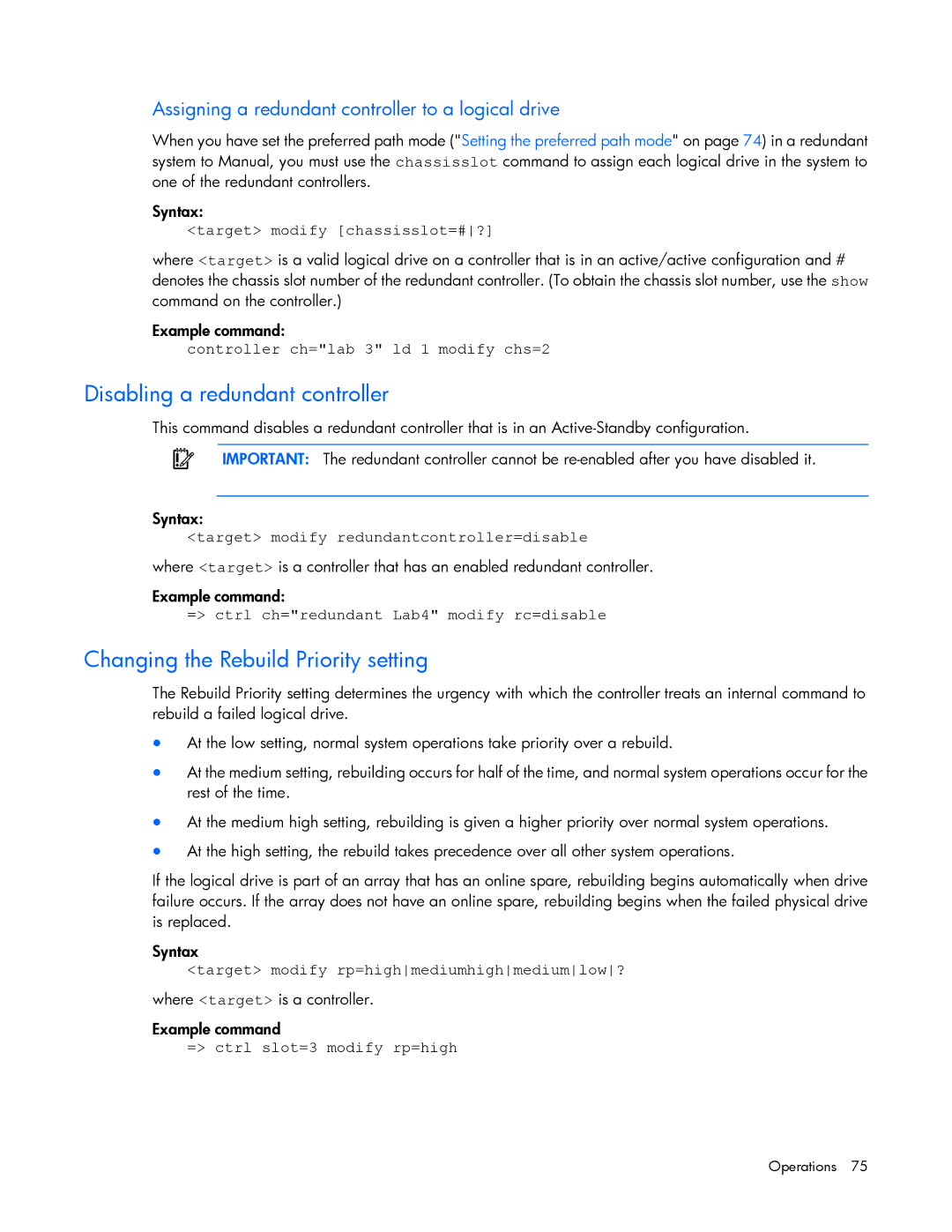Assigning a redundant controller to a logical drive
When you have set the preferred path mode ("Setting the preferred path mode" on page 74) in a redundant system to Manual, you must use the chassisslot command to assign each logical drive in the system to one of the redundant controllers.
Syntax:
<target> modify [chassisslot=#?]
where <target> is a valid logical drive on a controller that is in an active/active configuration and # denotes the chassis slot number of the redundant controller. (To obtain the chassis slot number, use the show command on the controller.)
Example command:
controller ch="lab 3" ld 1 modify chs=2
Disabling a redundant controller
This command disables a redundant controller that is in an
IMPORTANT: The redundant controller cannot be
Syntax:
<target> modify redundantcontroller=disable
where <target> is a controller that has an enabled redundant controller.
Example command:
=> ctrl ch="redundant Lab4" modify rc=disable
Changing the Rebuild Priority setting
The Rebuild Priority setting determines the urgency with which the controller treats an internal command to rebuild a failed logical drive.
•At the low setting, normal system operations take priority over a rebuild.
•At the medium setting, rebuilding occurs for half of the time, and normal system operations occur for the rest of the time.
•At the medium high setting, rebuilding is given a higher priority over normal system operations.
•At the high setting, the rebuild takes precedence over all other system operations.
If the logical drive is part of an array that has an online spare, rebuilding begins automatically when drive failure occurs. If the array does not have an online spare, rebuilding begins when the failed physical drive is replaced.
Syntax
<target> modify rp=highmediumhighmediumlow?
where <target> is a controller.
Example command
=> ctrl slot=3 modify rp=high
